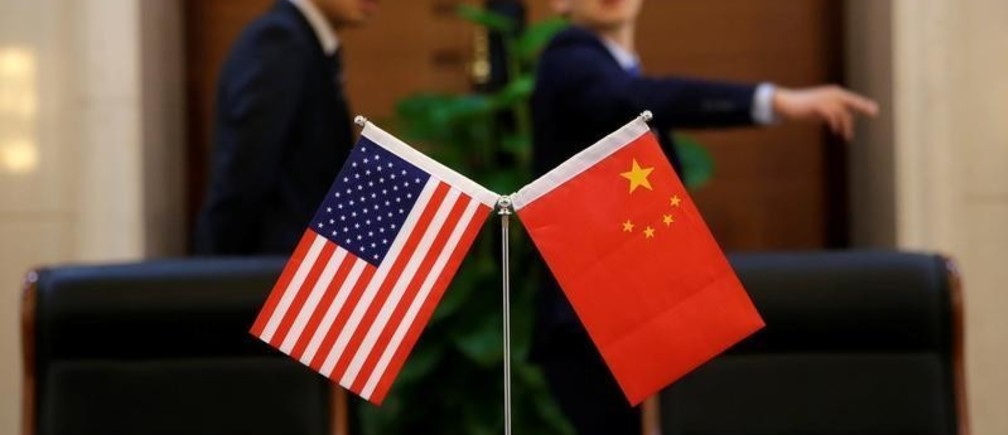
US-China partnership is deemed paramount in the 21stCentury. Nonetheless, strategic rivalry between the two states has been intensifying in recent months. White House officials have lashed out at China at various world forums, signalling their frustration with the growing Chinese influence. Several contentious issues mark the thorny relationship between Washington and Beijing and these are likely to have far-reaching implications for the global order. The South China Sea is an essential maritime trade route for Beijing, with 65% of its maritime trade transiting the waterway in recent years. Given increasing military activity, China under President Xi Jinping, has stepped up its operations in the South China Sea.
US allies in Southeast Asia, inter alia, Japan, Singapore, South Korea, Vietnam and the Philippines are loath to accept Chinese presence in the contentious South China Sea. The US, in order to check China’s burgeoning efforts to reclaim the disputed islands, and safeguard the interests of its allies– many of which have entered into defence pacts with it, has bolstered its freedom of navigation operations (FONOPs) and attempts to secure sea lines of communication (SLOCs). This has irked Beijing which insists that its policy stand on the South China Sea as well as the disputed islands in the region is in line with International Law. It has been a longstanding fear that if China and Southeast Asian nations do not resolve their outstanding issues amicably, due to the defence agreements between the US and various Southeast Asian states, Washington could be drawn into an active conflict with Beijing.
In the context of deteriorating ties with China and in a bid to containing its rise, the US Administration has been weighing different policy alternatives. The reinvigoration of Quadrilateral Security Dialogue (QSD or Quad) – a four-country alliance comprising Australia, Japan, India and the US– can be seen in this context. The Quad was originally founded in 2007 for boosting trade and security ties and exploring avenues for cooperation between these four countries. However, the US has been actively trying to engage with Quad states– which have their own differences with China– and collaborate against what Mike Pompeo termed Beijing’s “exploitation, coercion, and corruption.” With this new regional security architecture being seen as a future ‘eastern NATO’, China, has also been renewing its engagements in the Asia-Pacific and deepening its commercial and geopolitical clout.
Moreover, the US views China’s Belt and Road Initiative (BRI)– Beijing’s momentous multi-billion-dollar infrastructure project stretching from East Asia to Europe – with great skepticism, and has not shied away from labelling it as “debt-trap diplomacy”. A belief that often permeates policy circles in Washington is that the BRI is, contrary to Chinese claims, not a purely economic initiative. In fact, BRI is viewed by the U.S. as a manifestation of disturbing expansion of Chinese economic and, more importantly, military might. The US has been struggling to offer a competing narrative and is perturbed by the smaller states in the Global South being drawn into the Chinese sphere of influence by the virtue of the project. Washington invariably contends that the BRI poses a colossal challenge to its global, dominance, power, and influence. Another area where Sino-U.S. rivalry has been playing out is Africa. China is becoming an increasingly important player in the economic development, politics as well as security of the continent. McKinsley has estimated that at the current breakneck pace, Chinese investments in Africa would surpass U.S. levels within a decade. Washington is, of course, cognizant of these developments. John Bolton, the erstwhile US National Security Advisor under Donald Trump, blamed China for using “bribes, opaque agreements and the strategic use of debt to hold states in Africa captive to Beijing’s wishes and demands”.
Furthermore, the spectrum of Sino-U.S. competition has recently expanded to include the domain of the space. Notwithstanding the fact that Beijing has proclaimed its peaceful intentions pertaining to its space programme, Washington eyes it with great cynicism. This can be ascertained from the fact that in June 2020, the Pentagon released its Defence Space Strategy, which lambasted China and Russia of having “weaponized space as a means to reduce U.S. and allied military effectiveness and challenge our freedom of operation in space.” Presently, China trails behind the U.S. in terms of the number of operational satellites in orbit – Beijing has 363 satellites in space compared to 830 American satellites. In order to counter Chinese space efforts and address challenges posed by potential competitors – China and Russia– the US Space Force (USSF)was established in December last year as the sixth branch of the military. The weaponization of space certainly poses a threat to global peace and security. The Sino-US rivalry is likely to intensify in the context of current geopolitical developments. While many anticipate a change in the US policy towards China amid the impending power transition in Washington, it is implausible that a radical paradigm shift will take place.
—The writer is a researcher at Centre for Aerospace & Security Studies.
Source: https://pakobserver.net/on-strategic-competition-between-china-us/

